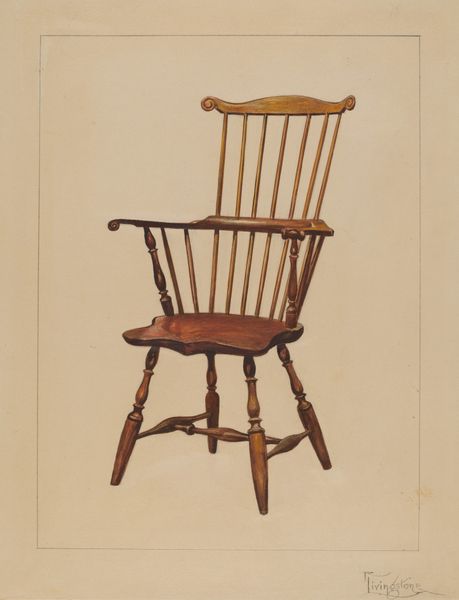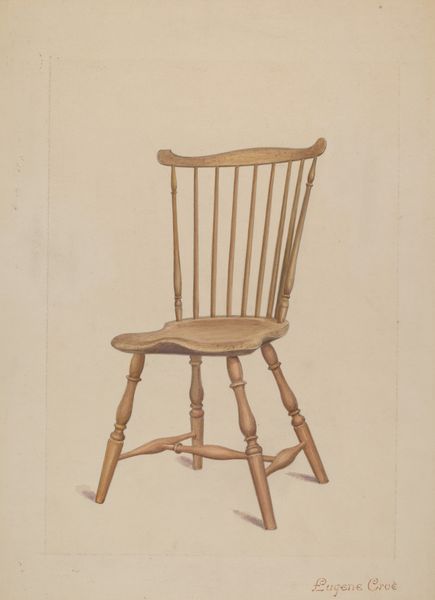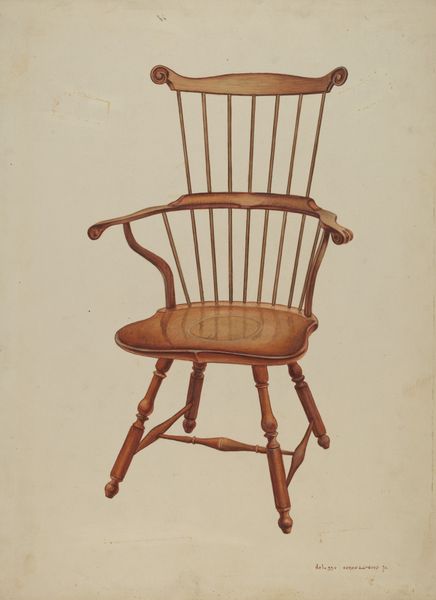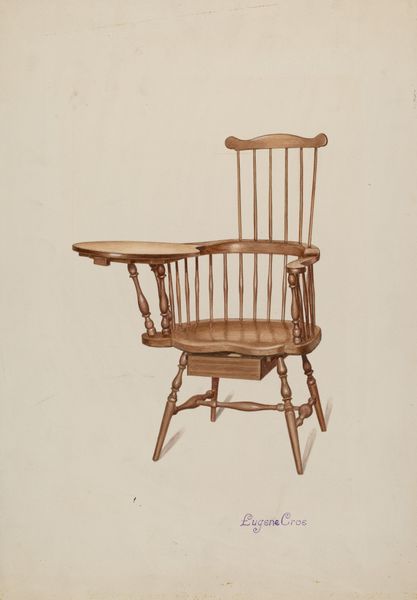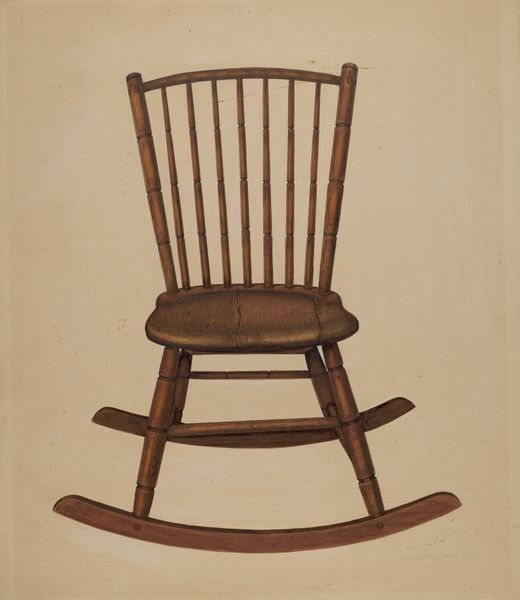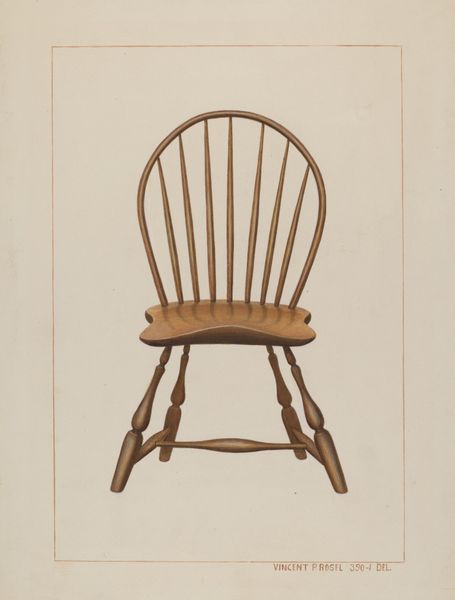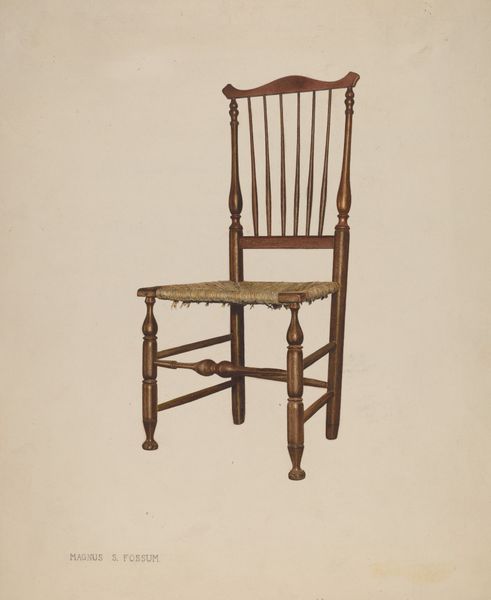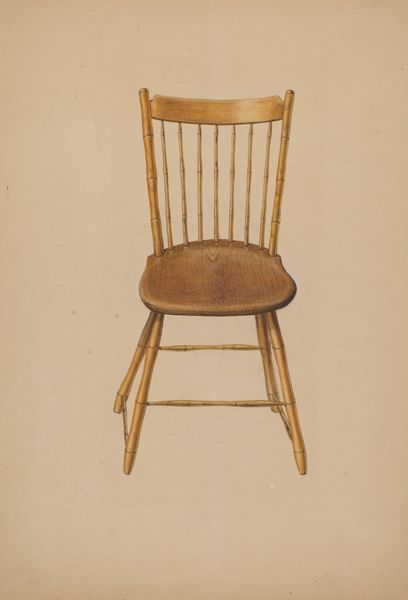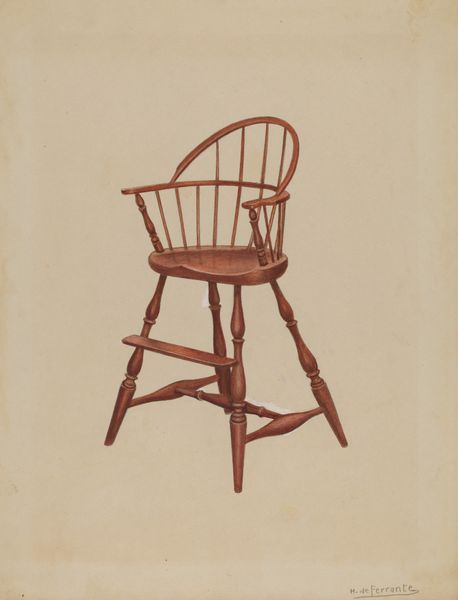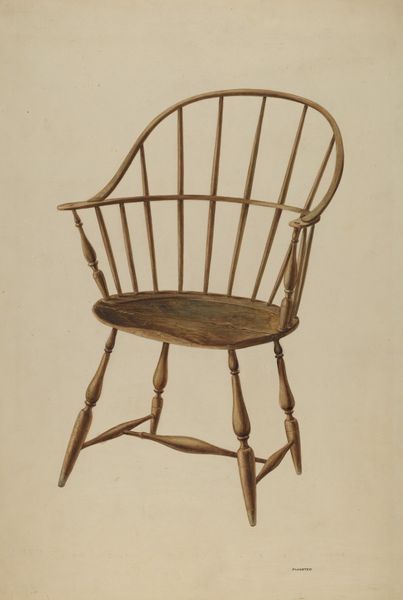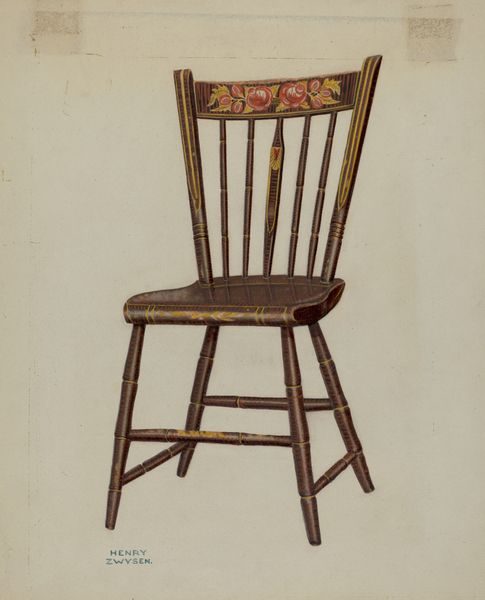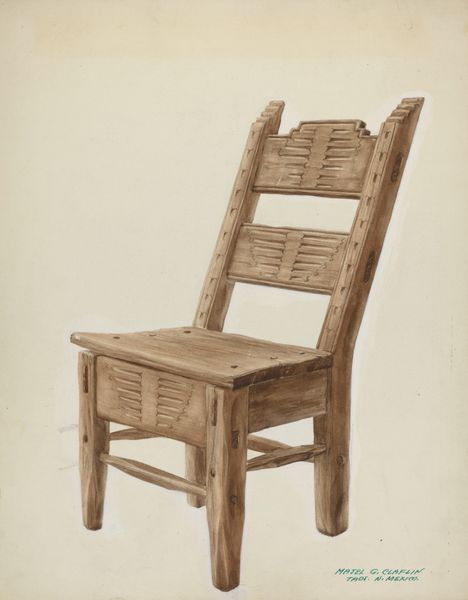
drawing, watercolor
#
drawing
#
water colours
#
watercolor
#
watercolour illustration
#
watercolor
#
realism
Dimensions: overall: 45.7 x 35.5 cm (18 x 14 in.) Original IAD Object: 31"high, 17 1/2"wide. See data sheet for details.
Copyright: National Gallery of Art: CC0 1.0
Curator: This unassuming watercolor, simply titled "Windsor Armchair," caught my attention. It's dated around 1940 and created by Donald Harding. It presents itself with the quietness that almost suggests a craftsman's schematic. Art Historian: Yes, and there’s something subtly powerful in its quietude, isn't there? This piece speaks volumes about the vernacular tradition within American art of the period. It elevates an everyday object, reflecting a broader social interest in depicting the common and relatable during the early to mid 20th century. Curator: I am really struck by the attention paid to the wood grain. It invites a certain appreciation for process. One is left pondering over the stages required to fashion and manufacture furniture like this – thinking about trees felled and planks cut and the labor needed to bring the piece to life. You almost feel the texture here. Art Historian: Absolutely. And I'd argue the very act of painting the chair like this transforms it, right? The object moves out of being merely functional into something examined, documented, memorialized on paper. Think about how government art programs of the era often aimed to record Americana; this fits within that impulse, lending the object significance far beyond just its utility as a chair. Curator: Good point! I see those New Deal connections now, the celebration of local industry. There’s nothing precious, in the sense of "high art" values, about rendering the item as accurately and lovingly as possible. Harding’s decision to use watercolor further democratizes the image, a deliberate and potentially political artistic choice, maybe to appeal to the public eye at the time. Art Historian: Exactly. Displaying something like this acknowledges that artistic interest, subject matter and creative effort reside not just in fine art, but in what people use, produce and ultimately live amongst day by day. It’s an artistic testament to broader cultural shifts occurring. It subtly shifts perspectives on what constitutes cultural heritage itself. Curator: So true, and this close examination does invite a new level of respect for what appears plain initially. Art Historian: Yes, it's really revealing how close examination shifts one’s perspective of both this image as an artistic rendering of a Windsor Armchair but equally the social context in which that item holds value and deeper cultural meanings.
Comments
No comments
Be the first to comment and join the conversation on the ultimate creative platform.
